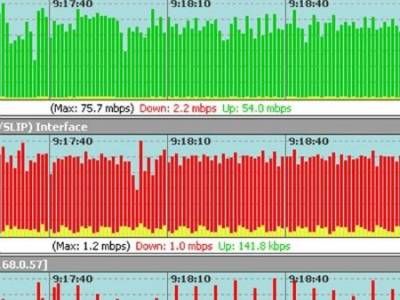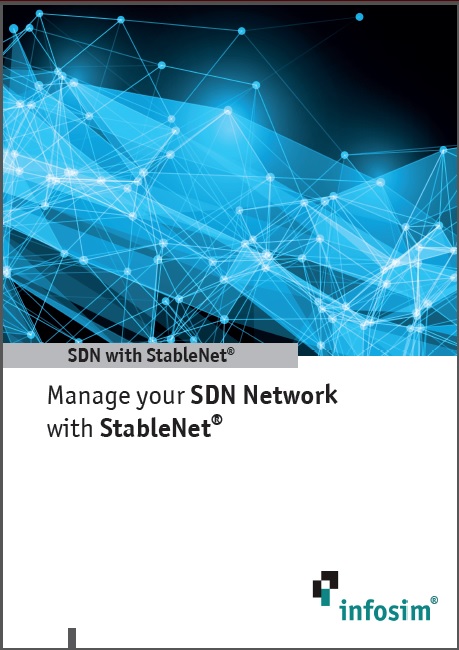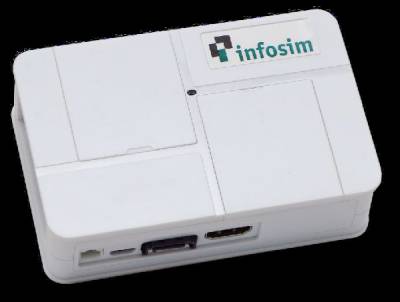Infosim®, a leading manufacturer of automated Service Fulfillment and Service Assurance solutions for Telcos, ISPs, MSPs and Corporations, today announced a proprietary new technology called Dynamic Rule Generation (DRG) with StableNet® 7.
The challenge: The legacy Fault Management approach includes a built-in dilemma: Scalability vs. Aggregation. On the one hand, it is unfeasible to pre-create all possible rules while on the other hand, not having enough rules will leave NOC personnel with insufficient data to troubleshoot complex scenarios.
The solution: DRG expands and contracts rules that automatically troubleshoot networks by anticipating all possible scenarios from master rule sets. DRG is like cruise control for a network rule set. When DRG is turned on, it can robotically expand and contract rule sets to keep troubleshooting data at optimum levels constantly without human intervention. It will also allow for automatic ticket generation and report alarms raised by dynamically generated rules. DRG leads to fast notification, a swift service Impact Analysis, and results in the first self-regulating Root Cause Analysis in today’s Network Management Software market.
Start automating Fault Management and stop manually creating rules! Take your hands off the keyboard and allow the DRG cruise control to take over!
Supporting Quotes:
Dr. Stefan Köhler, CEO for Infosim® comments:
“We at Infosim® believe you should receive the best value from your network, and exchange of information should be as easy as possible. The way we want to achieve these goals, is to simplify the usage and automate the processes you use to manage your network. Rules creation and deletion has been an Achilles’ heel of legacy network management systems. With DRG (Dynamic Rule Generation), we are again delivering another new technology to our customers to achieve our goal of the dark NOC.”
Marius Heuler, CTO for Infosim® comments:
“By further enhancing the already powerful Root Cause Analysis of StableNet®, we are providing functionality to our users that will both take care of ongoing changes in their networks while automatically keeping the rules up to date.”
ABOUT INFOSIM®
Infosim® is a leading manufacturer of automated Service Fulfillment and Service Assurance solutions for Telcos, ISPs, Managed Service Providers and Corporations. Since 2003, Infosim® has been developing and providing StableNet® to Telco and Enterprise customers. Infosim® is privately held with offices in Germany (Würzburg – Headquarters), USA (Austin) and Singapore.
Infosim® develops and markets StableNet®, the leading unified software solution for Fault, Performance and Configuration Management. StableNet® is available in two versions: Telco (for Telecom Operators and ISPs) and Enterprise (for IT and Managed Service Providers). StableNet® is a single platform unified solution designed to address today’s many operational and technical challenges of managing distributed and mission-critical IT infrastructures.
Many leading organizations and Network Service Providers have selected StableNet® due to its enriched features and reduction in OPEX & CAPEX. Many of our customers are well-known global brands spanning all market sectors. References available on request.
At Infosim®, we take pride in the engineering excellence of our high quality and high performance products. All products are available for a trial period and professional services for proof of concept (POC) can be provided on request.
ABOUT STABLENET®
StableNet® is available in two versions: Telco (for Telecom Operators and ISPs) and Enterprise (for IT and Managed Service Providers).
StableNet® Telco is a comprehensive unified management solution; offerings include: Quad-play, Mobile, High-speed Internet, VoIP (IPT, IPCC), IPTV across Carrier Ethernet, Metro Ethernet, MPLS, L2/L3 VPNs, Multi Customer VRFs, Cloud and FTTx environments. IPv4 and IPv6 are fully supported.
StableNet® Enterprise is an advanced, unified and scalable network management solution for true End-to-End management of medium to large scale mission-critical IT supported networks with enriched dashboards and detailed service-views focused on both Network & Application services.
Thanks to Infosim for the article.




















 Expanding Services Monitoring to Small sites has always been a challenge, especially in environments where there are large numbers of relatively small sites. While these sites may be physically ‘small’ they are all very important to the overall business service delivery. This model includes enterprise businesses like retail, branch based financial organizations, educational institutions, as well as providers who deliver services to home and small office.
Expanding Services Monitoring to Small sites has always been a challenge, especially in environments where there are large numbers of relatively small sites. While these sites may be physically ‘small’ they are all very important to the overall business service delivery. This model includes enterprise businesses like retail, branch based financial organizations, educational institutions, as well as providers who deliver services to home and small office.

